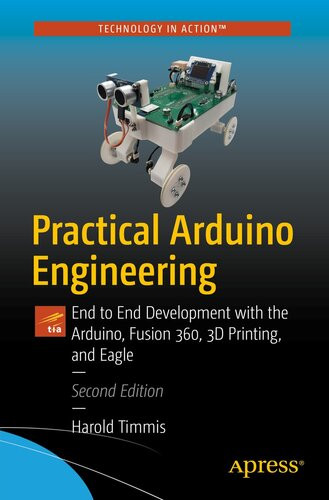

Most ebook files are in PDF format, so you can easily read them using various software such as Foxit Reader or directly on the Google Chrome browser.
Some ebook files are released by publishers in other formats such as .awz, .mobi, .epub, .fb2, etc. You may need to install specific software to read these formats on mobile/PC, such as Calibre.
Please read the tutorial at this link: https://ebookbell.com/faq
We offer FREE conversion to the popular formats you request; however, this may take some time. Therefore, right after payment, please email us, and we will try to provide the service as quickly as possible.
For some exceptional file formats or broken links (if any), please refrain from opening any disputes. Instead, email us first, and we will try to assist within a maximum of 6 hours.
EbookBell Team

4.8
14 reviewsImplement Arduino-based designs in your project, and build, debug, and extend it using a solid engineering approach. This second edition is expanded to provide a better understanding of the engineering process and what it means to be an end-to-end developer.
You’ll start out by reviewing basic engineering procedures, from the fundamental requirements and preliminary design to prototyping and testing. You’ll then apply those principles to single devices like LCDs, potentiometers and GPS modules, and move on to the integration of several modules into a larger project, a sub-autonomous robot. This robot will include devices such as GPS, Bluetooth, an OLED screen, an accelerometer, humidity and temp sensor, motor drivers, and ultrasonic sensor.
This version goes on to cover how to create 3D models with Fusion360, make your own PCBs using Eagle, and use and maintain a 3D printer. Each and every chapter exemplifies this process and demonstrates how you can profit from the implementation of solid engineering principles―regardless of whether you just play in your basement or you want to publicize and sell your devices. With Practical Adruino Engineering you’ll be able to review and improve this process, and even extend its scope.
What You’ll Learn
● Set up the Arduino software landscape and project for testing
● Review the process of hardware engineering as applicable to Arduino projects
● Create 3D models for 3D printing using Fusion360 in a robot chassis project● Make PCBs using Eagle and incorporate it into a sensor station shield project
● Use and maintain a 3D printer with your own project
● Create Arduino shields in Eagle
● Debug Arduino projects of varying complexities via LabVIEW
● Use a special Arduino board for Bluetooth to control domestic and mobile Arduino projects
Who This Book Is For
Primarily aimed at intermediate engineers or engineering students. However, this book is also great for beginners and any maker who wants to expand their abilities in a single book.